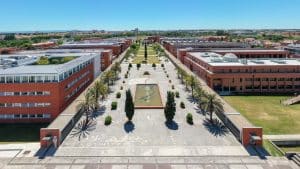The University of Aveiro (UA) has developed an autonomous robot to disinfect public spaces using ultraviolet radiation and harmless chemical solutions, the higher education institution said today.
According to a press release from that university, GermIrrad is a robot that, “autonomously and through ultraviolet (UV) radiation and chemical solutions that are not harmful to human health, disinfects public spaces even when they are being used by people.

Developed at the UA, the robot is able to “map the environment, determine an efficient disinfection trajectory, execute that trajectory safely, and avoid impact with humans.”
Germlrrad was conceived to act “in favor of biosecurity in various spaces” and is the result of a partnership between the Institute of Electronic Engineering and Informatics of Aveiro (IEETA) of the UA, the Faculty of Engineering of the University of Porto and the company SpinnerDynamics.
The robot is presented as “safe, efficient, ecological and economical”, able to operate in different environments, such as hospitals or clinics, areas with large crowds of people, such as public transportation, shopping centers or event spaces.
It can also be used in the agribusiness or food industry to “ensure product safety and prevent losses due to the spread of viral or bacterial diseases.”
“The goal of this robot is to allow an efficient and autonomous disinfection of public spaces while they are being used,” explains Nuno Lau, a researcher from IEETA at UA and one of those responsible for the project.
“Although the development of the social navigation, which allows the robot to circulate safely and comfortably for people, is in the final stages, the other modules, such as the detection and tracking of people around the robot, are already developed,” he explained.
For Nuno Lau, “the added value of this project is related to the combination of several disinfection methods (chemical and through UV light), which proved to be more efficient than each method separately, and in the ability to disinfect spaces in the presence of humans.
In the consortium, the University of Aveiro was responsible for research and development in the areas of robotics, more specifically in the areas of navigation for disinfection and social navigation.
SpinnerDynamics, the company promoting the project, developed the synergetic disinfection technology, with germicidal radiation, Far-UVC and photocatalytic substances, and also integrated the technology into the robotic platform.
The germicidal effectiveness of ultraviolet radiation and photocatalytic substances, “which together with radiation have an even greater effectiveness in inactivating viruses and bacteria,” have been validated at the Faculty of Engineering, University of Porto.

